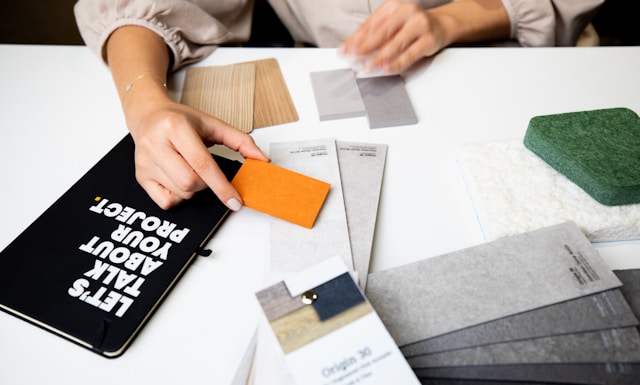Interior design has always been about creativity, comfort, and functionality. But in the digital age, a new element is reshaping the way we imagine and build our living spaces Artificial Intelligence (AI).
From automated lighting systems to AI-generated room layouts, technology is redefining how designers and homeowners create beautiful, intelligent environments.
1. The Rise of Smart Homes
Smart homes are no longer futuristic concepts — they’re very much a part of our present reality. With the rapid integration of AI-powered technologies, our living spaces have become more responsive, efficient, and emotionally intelligent than ever before. Devices such as smart thermostats, automated lighting systems, and advanced home security setups now go beyond convenience they actively learn and adapt to the rhythms of daily life. By observing habits and preferences, these intelligent systems can automatically adjust temperature, lighting, and even subtle fragrances to create perfectly tailored comfort zones that reflect each person’s mood and lifestyle. Over time, the home begins to understand you knowing when you prefer soft light for relaxation, cooler air for sleep, or energising brightness in the morning. This seamless connection between AI and everyday living has redefined comfort and convenience, turning ordinary houses into truly intuitive living environments that enhance well-being, save energy, and make life more effortless with every interaction.
2. AI in Space Planning and Layouts
One of the biggest challenges in interior design is optimizing space. AI algorithms now analyze room dimensions, furniture placement, and natural light to generate efficient layouts.
By simulating multiple design options within seconds, AI helps designers make data-driven decisions that save both time and cost — while maintaining aesthetic balance.
3. Personalized Design Through Data
AI tools have reached a stage where they can truly understand human preferences by analysing vast amounts of data gathered from social media activity, browsing habits, purchase behaviour, and even lifestyle patterns. Every like, save, and search contributes to an intelligent profile of what inspires and appeals to an individual. For interior designers, this means having access to deep, data-driven insights into a client’s personality, taste, and aesthetic comfort zone. AI can identify whether someone gravitates towards minimalistic spaces, bold and vibrant palettes, or natural, earthy tones — helping designers curate interiors that feel deeply personal and emotionally aligned.
From selecting colour schemes that influence mood to suggesting textures, fabrics, and materials that match one’s lifestyle, AI transforms guesswork into precision. It’s almost like having a virtual design partner who not only understands your visual preferences but also your emotional connection to spaces — crafting interiors that reflect exactly who you are. By bridging technology and creativity, AI allows every design to become more than just a space — it becomes a mirror of personality, comfort, and individuality.
4. Predictive Design: The Next Step
AI doesn’t just respond — it predicts. With predictive analytics, AI can forecast future design trends, helping designers stay ahead of the curve.
Imagine getting real-time insights on which materials will dominate the next season or how user behavior will evolve giving an interior design consultant the power to make proactive, trend-forward choices.
5. Sustainability Meets Intelligence
Sustainability is no longer optional — it’s essential. With growing environmental awareness, both designers and homeowners are prioritising eco-conscious choices in every aspect of interior design. AI is playing a key role in this transformation by analysing material life cycles, energy consumption patterns, and carbon footprints to guide smarter, greener decisions. Armed with the right data, designers can now select sustainable materials, optimise natural lighting, and reduce waste during construction creating spaces that are not only visually stunning but also environmentally responsible and future-ready.
6. Virtual Reality and AI Collaboration
The fusion of Artificial Intelligence (AI) with Virtual Reality (VR) has completely redefined the way interior designers communicate their ideas and visions to clients. What was once limited to flat drawings or 3D renders has now evolved into fully immersive virtual experiences, allowing homeowners to literally step inside their future spaces — all before a single brick is laid. Through AI-driven modelling and VR simulations, clients can walk through rooms, explore furniture placements, adjust lighting, or experiment with colour schemes in real time. This hands-on interaction gives them a tangible sense of space, proportion, and atmosphere, turning abstract concepts into vivid, life-like experiences.
Beyond its visual appeal, this technology significantly reduces misunderstandings and design revisions, helping both designers and clients make faster, more confident decisions. It encourages collaboration, boosts creativity, and strengthens trust — as clients can see exactly how their ideas will translate into reality. In essence, the synergy between AI and VR bridges imagination and execution, creating a seamless, transparent, and inspiring design journey that’s transforming the future of interior design presentations.
Conclusion
The future of interior design lies at the intersection of creativity and technology. As AI continues to evolve, it’s clear that living spaces will become more intelligent, sustainable, and personal than ever before.
Designers who embrace this transformation won’t just follow trends — they’ll create them.
